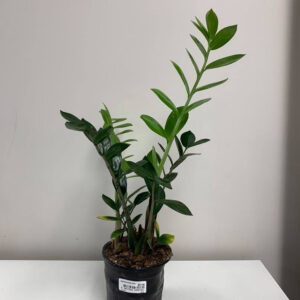Macadamia Beaumont
$29.99
Macadamia tetraphylla x integrifolia ‘Beaumont’
Attractive, upright, evergreen tree with heavy crops of good quality nuts. New foliage is red-maroon and the tree is smothered in fragrant, pink flowers early spring-summer. Ideal specimen for the garden where the grand flower display and clusters of nuts can be admired. Grows approximately 5m high x 4m wide in 10 years.
Heavy yields of large nuts that need to be picked, they will not drop. Takes 4-5 years to first fruit and 7-8 months for the nuts to mature. Pollination is by honey bees. Self fertile but more fruitful when cross-pollinated with another variety. Nuts are borne from summer to autumn. Optimum maturity is when the outside shell is splitting to reveal the dark brown internal husk, this is normally from August onwards. Delicious raw, roasted or dipped in chocolate. Crush and use in salads, savoury dishes or desserts. High in protein, good oil (monounsaturated) and selium.
Full sun. Best planted early spring in a fertile, well drained, sheltered site. Stake young trees to assist root development and protect from frost while young. Maintain good moisture content during nut growth to prevent nuts dropping. Prune to maintain desired shape and size, ensuring the canopy stays open to assist pollination by insects. Fertilise seasonally.
Out of stock
Description
Macadamia tetraphylla x integrifolia ‘Beaumont’
Attractive, upright, evergreen tree with heavy crops of good quality nuts. New foliage is red-maroon and the tree is smothered in fragrant, pink flowers early spring-summer. Ideal specimen for the garden where the grand flower display and clusters of nuts can be admired. Grows approximately 5m high x 4m wide in 10 years.
Heavy yields of large nuts that need to be picked, they will not drop. Takes 4-5 years to first fruit and 7-8 months for the nuts to mature. Pollination is by honey bees. Self fertile but more fruitful when cross-pollinated with another variety. Nuts are borne from summer to autumn. Optimum maturity is when the outside shell is splitting to reveal the dark brown internal husk, this is normally from August onwards. Delicious raw, roasted or dipped in chocolate. Crush and use in salads, savoury dishes or desserts. High in protein, good oil (monounsaturated) and selium.
Full sun. Best planted early spring in a fertile, well drained, sheltered site. Stake young trees to assist root development and protect from frost while young. Maintain good moisture content during nut growth to prevent nuts dropping. Prune to maintain desired shape and size, ensuring the canopy stays open to assist pollination by insects. Fertilise seasonally.





